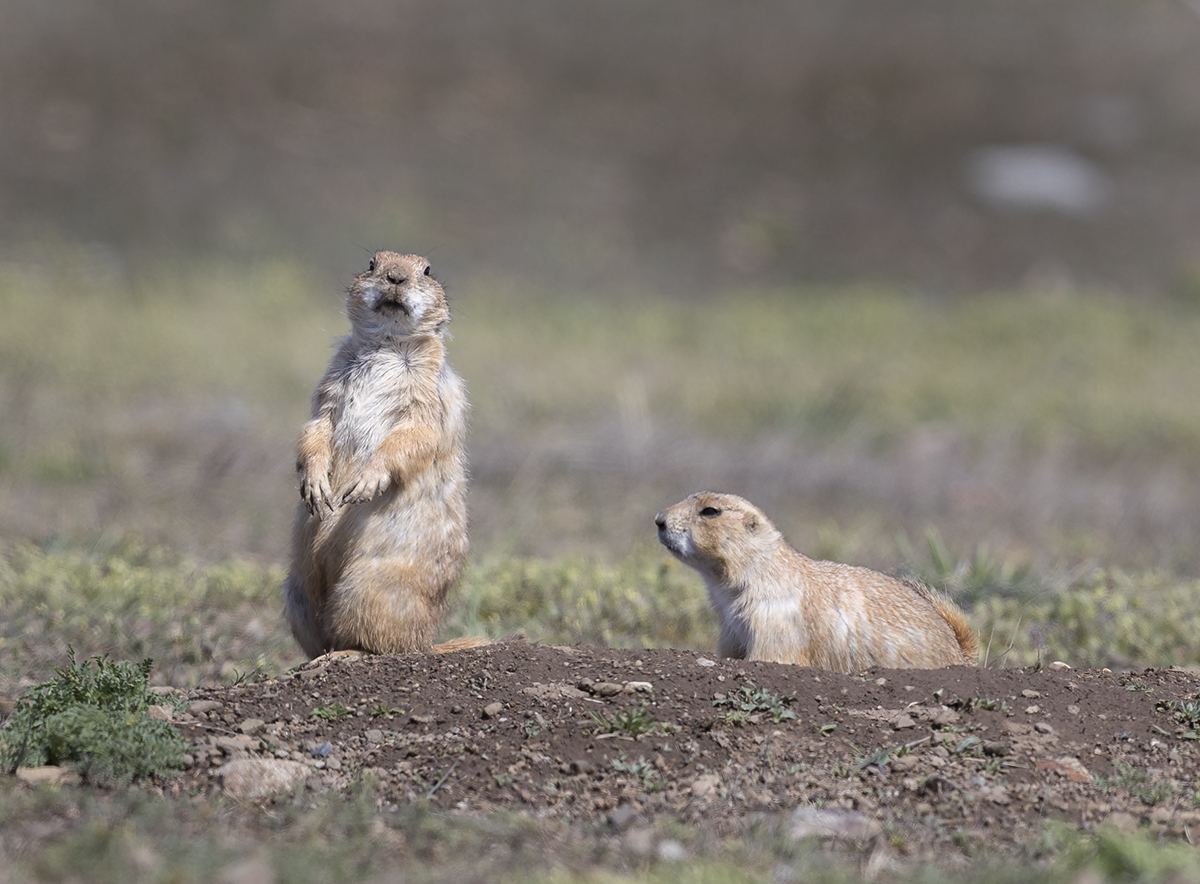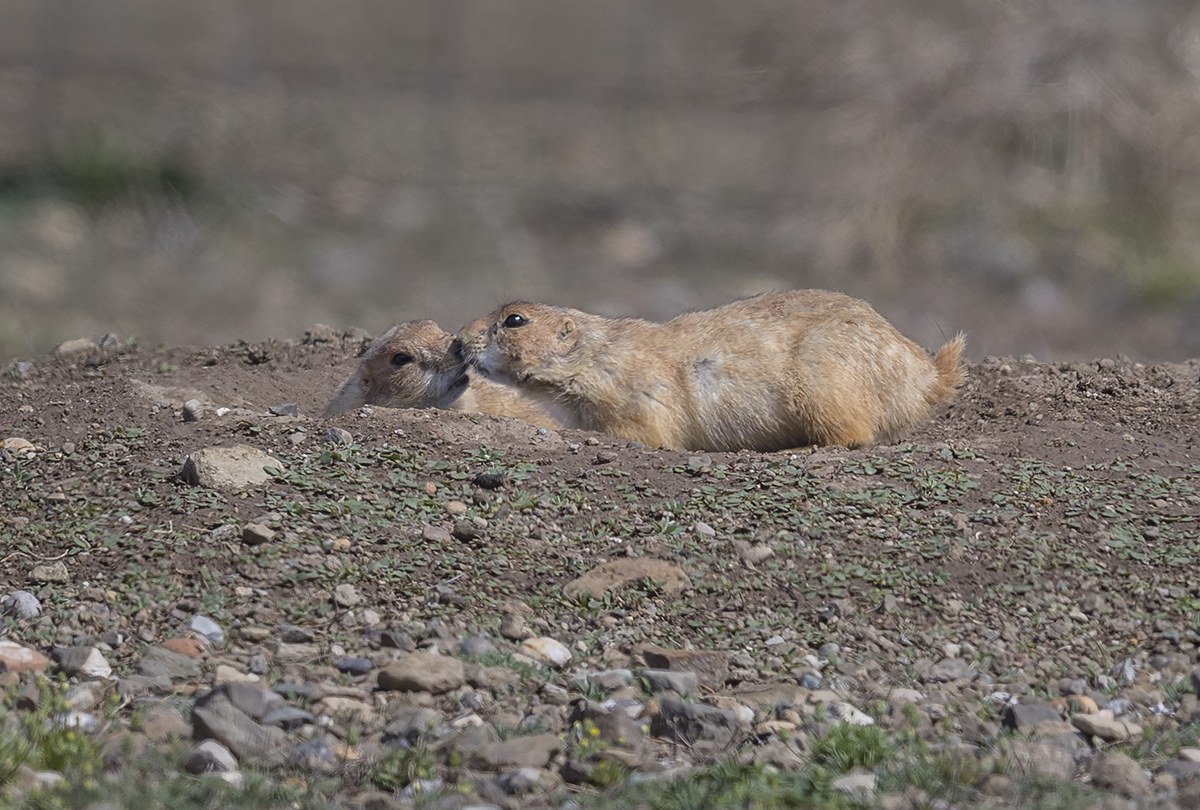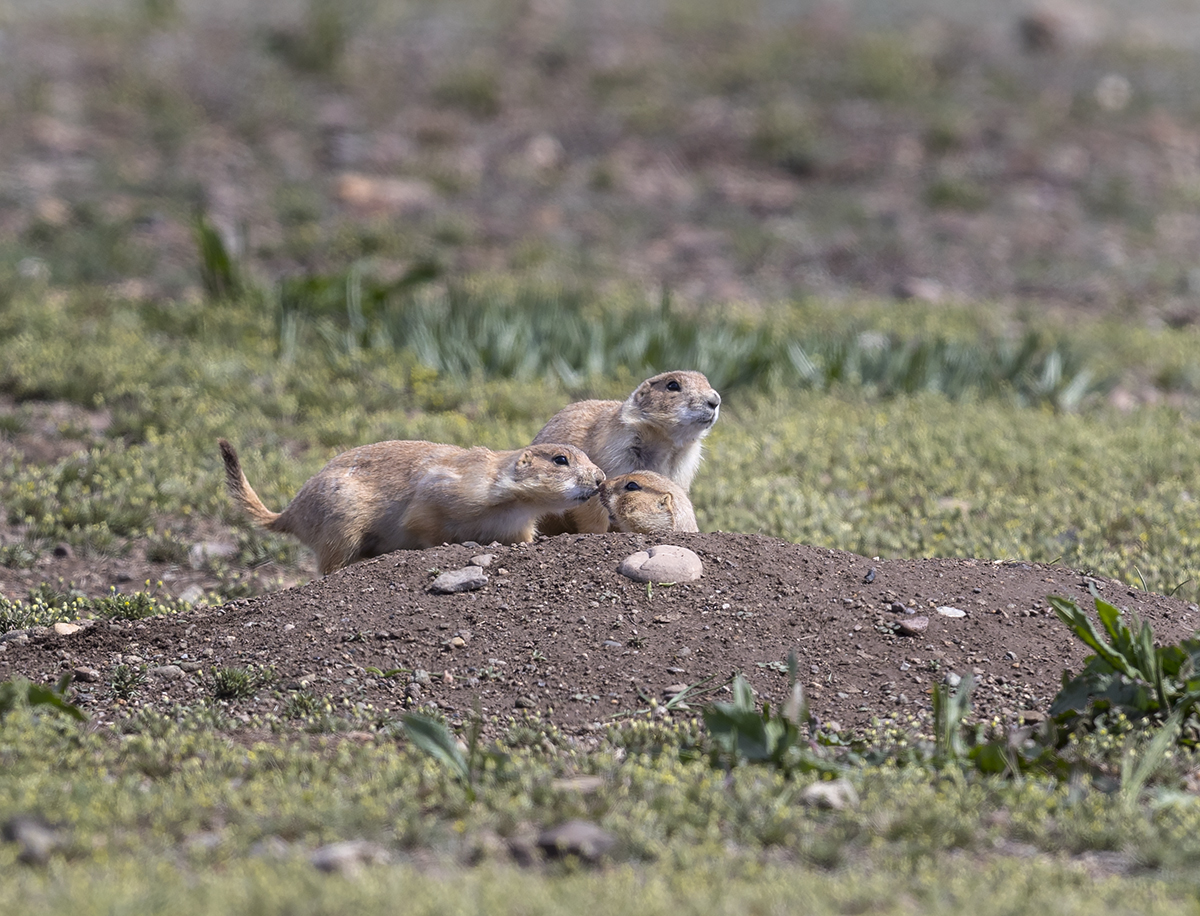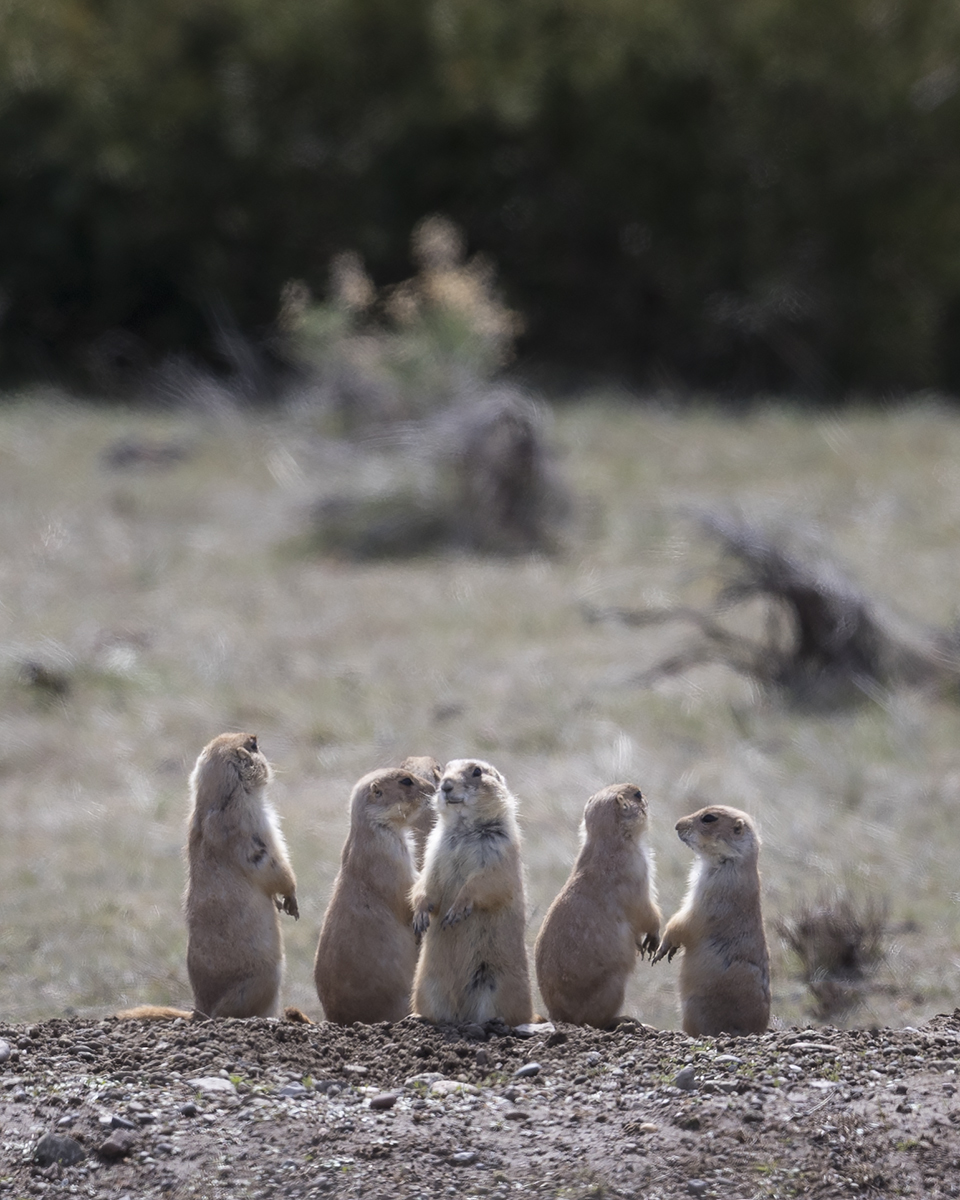Dog Day
Story and Photography by Kathy Lichtendahl
Growing up on rural Prince Edward Island, my sister and I were occasionally summoned by our father to the back field where we took turns throwing clay pigeons for him to shoot. It was fun to see who could toss the disk the highest and the farthest but we always rooted for Dad to hit the target, even though it meant spending twice as long cleaning up the scattered debris at the end of the evening.
What I have never been able to comprehend is how someone can find pleasure in shooting live animals with the sole purpose of using them for target practice. In several of the western states, those creatures of choice are often black-tailed prairie dogs. I can only surmise that the shooters have spent no time observing or learning about these fascinating social animals.
According to researchers, Prairie dogs have some of the most complex vocabularies of any mammals. They actually have different vocalizations for “human with a gun” and “human with a camera!” I don’t know if they have the facial recognition capabilities of some animals but it does seem to me that they settle down a little quicker each time I stop to photograph this particular colony.
One funny thing that happened yesterday: When I decided I was going to try and get some close-up images of this group, I threw my small one-person blind in with my camera gear. When we arrived at the town I got out of the car and started setting up. After a few alarm calls the dogs seemed to settle down and go back to their business. That is until I pulled out my blind and slipped it over my head. Then the air exploded with many more and much louder alarm cries from every direction. I pulled off the blind and tossed it back in the car and immediately everything went back to calm. Apparently they are willing to accept the lady with the camera but seeing her being “eaten” by some strange piece of fabric is terrifying!
My goal was to capture several specific behaviors of the animals that I find incredibly interesting – in particular “kissing” and “high fives.”
The nose touching is a form of recognition and communication among ward members. Black-tailed prairie dog towns are carefully laid out. Coteries are family groups consisting of one male, several females and their young up to two years of age. Several coteries together form a ward and the various wards all together make up the town, which can be many acres in size.
The “high five” is used to signal the all clear. One animal will rear up on its hind legs, then throw its head back and its arms out before returning to all fours. What makes it fascinating is that there is often a wave effect where one or more animals will mimic the behavior of the first, resulting in the appearance of a synchronized celebration.
Another behavior I witnessed yesterday was the high five stretch followed by collapse. I have no idea what it signifies but it was hilarious to observe. The difference between the usual high five and the stretch is that the latter is initiated from a lying down position and after the huge stretch, the dog appears to collapse as if exhausted. He stays in place for about 10 seconds and then jumps up and resumes activity.
In the case of the animals above, the stretches were simultaneous, as were the collapses.
There is no doubt in my mind that these animals are very attached to their family groups. The idea of someone randomly executing members of the family is truly incomprehensible.
Kathy Lichtendahl is based in Northwest Wyoming, near Yellowstone National Park. Besides selling her prints at Open Range Images Gallery in Cody, she also owns and operates Light in the Valley, LLC., a professional photography company offering private tours and commercial photo services. www.lightinthevalley.net
Read more about Kathy Lichtendahl: powelltribune.com/news/item/15577-local-skier-and-photographer-featured-in-outdoor-photographer
READ MORE ABOUT BLACK-TAILED PRAIRIE DOGS
Black-tailed Prairie dogs are designated a “pest” in Wyoming under the Department of Agriculture. They can be killed on sight or trapped any day of the year.
Learn more about Black-Tailed Prairie Dog Management in Wyoming
Trivia: Black-footed ferrets are “protected” animals in Wyoming, and “Habitat for black-footed ferrets really comes down to one thing – prairie dogs. Not only do ferrets eat almost exclusively prairie dogs (about 90% or more of their diet is prairie dogs), but they also rely on prairie dogs for their burrows, which ferrets use for shelter, safety, and a place to raise young. Because an adult ferret will eat about one prairie dog every three days, an individual ferret can eat over 100 prairie dogs in a single year! At this rate, each ferret needs about 50-100 acres of prairie dogs to survive. So, when the Game and Fish evaluates potential habitat for black-footed ferrets, we focus our efforts on ensuring that there will be enough healthy prairie dogs available to support a healthy population of ferrets.” -WGFD










Scott Slocum
Wonderful images and descriptions of what’s happening in them. Thank you!
Sylvia Bagdonsd
Beautiful pictures, excellent science, and information every young person should learn about to protect positive social norms about caring for animals. The impact on ecosystems by careless and uneducated people must be publically discussed by all ages, but especially young people, the future generations. Great job!